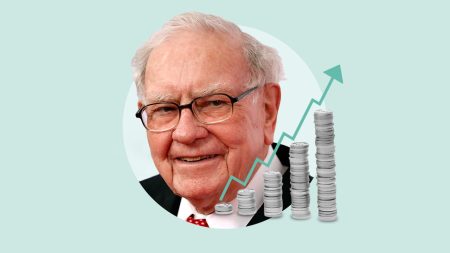Our writers and editors used an in-house natural language generation platform to assist with portions of this article, allowing them to focus on adding information that is uniquely helpful. The article was reviewed, fact-checked and edited by our editorial staff prior to publication.
Investing in the stock market can be a lucrative way to grow your wealth and achieve your long-term financial goals. Understanding the average stock market return over the long term can help guide your financial planning and determine how much of your portfolio to invest in stocks.
While the average stock market return is roughly 10% annually, this figure can vary greatly depending on factors such as inflation and market volatility. It’s important to remember that stocks can be volatile and high returns aren’t guaranteed. Here’s a breakdown of the average stock market return and how stocks have performed in recent history.
Understanding the average stock market return
The historical average stock market return, as measured by the S&P 500, generally hovers around 10 percent annually before adjusting for inflation, and about 6 to 7 percent when adjusted for inflation. This average, however, masks significant variations across different decades and economic conditions.
For example, during the 2008 financial crisis, the S&P 500 fell by more than 50 percent from October 2007 to March 2009. Conversely, some periods, such as the decade from 2011 to 2020, saw higher-than-average returns, with years like 2013 and 2019 witnessing returns of over 30 percent. The stock market’s performance is closely tied to broader economic conditions and tends to rebound sharply after steep drops, showing a trend of long-term upward growth despite short-term volatility.
| S&P 500 Returns (as of July 31, 2024) | Total Return |
|---|---|
| Year to date | 16.7 percent |
| One year | 22.15 percent |
| Three year (annualized) | 9.6 percent |
| Five year (annualized) | 15.0 percent |
| 10 year (annualized) | 13.15 percent |
The role of inflation and market volatility in average stock market returns
While understanding the average stock market return is crucial, it’s equally important to consider other factors that can influence returns, such as inflation and market volatility. These elements play a significant role in the real-world value of your investment returns and can affect your long-term financial goals.
How does inflation impact the average stock market return?
Inflation — the rate at which the general level of prices is rising — can significantly impact the real-world value of your stock market returns. As inflation increases, it reduces the purchasing power of each unit of currency, leading to higher input prices for businesses and lower consumer spending. This can put downward pressure on corporate profits and stock prices.
The average stock market return of about 10 percent doesn’t factor in the impact of inflation, which has historically been around 2 to 4 percent annually depending on the time period. A 10 percent return may sound great, but if inflation is high, your real return representing your increased purchasing power will be lower.
How does market volatility affect the average stock market return?
Stocks are volatile and high returns in the future aren’t guaranteed. While the market has returned about 10 percent over the long term, there have been stretches of time when the market’s return came in meaningfully above or below that level. Following the collapse of the tech bubble in the late 1990s, stocks generated subpar returns over the next decade that ended with the housing bubble and Great Recession in 2008-2009.
More recently, stocks have performed above their long-term average, as large technology companies have seen remarkable growth and investor enthusiasm about artificial intelligence has pushed stocks to record highs. Time will tell whether these gains can be sustained, but if history is any guide, returns may be lower over the coming decade than the previous one.
Strategies for maximizing returns
While understanding the average stock market return and the factors that influence it is essential, it’s also crucial to have strategies in place to maximize your returns. Being a long-term owner of stocks and reinvesting dividends received are two approaches that have stood up over time.
What is buy-and-hold investing and how can it maximize returns?
Buy-and-hold investing is a passive investment strategy where investors buy stocks or other securities and hold them for a long period, regardless of market fluctuations. This approach emphasizes long-term gains and stability, often outperforming active management over time after fees.
Legendary investors like Warren Buffett and Vanguard founder Jack Bogle advocate for this strategy due to its potential for healthy long-term returns and tax benefits, because investors can defer capital gains taxes. In contrast, active investing involves real-time buying and selling to capitalize on short-term gains, which requires accurate market timing and incurs additional fees and taxes. While active investing can yield high returns, it carries higher risks and requires more effort to manage.
Overall, a buy-and-hold strategy can help investors avoid the pitfalls of market timing and benefit from the market’s overall growth, providing a more consistent and less stressful path to wealth accumulation.
What is the importance of reinvesting dividends in stock market investing?
Reinvesting dividends is a powerful strategy for maximizing stock market returns. Dividends are part of a company’s profits paid out to shareholders, usually in the form of cash or additional shares. When these dividends are reinvested, they purchase additional shares of stock, which increases your investment and will lead to more dividends in the future. This cycle of reinvestment leads to exponential growth over time, leveraging the power of compounding.
The primary benefits of reinvesting dividends include compounding returns, ease of automation, and the potential to buy fractional shares, which allows for continuous investment regardless of the stock price. Over the long term, this strategy can significantly increase the value of an investment portfolio compared to simply taking dividends as cash.
Read the full article here










